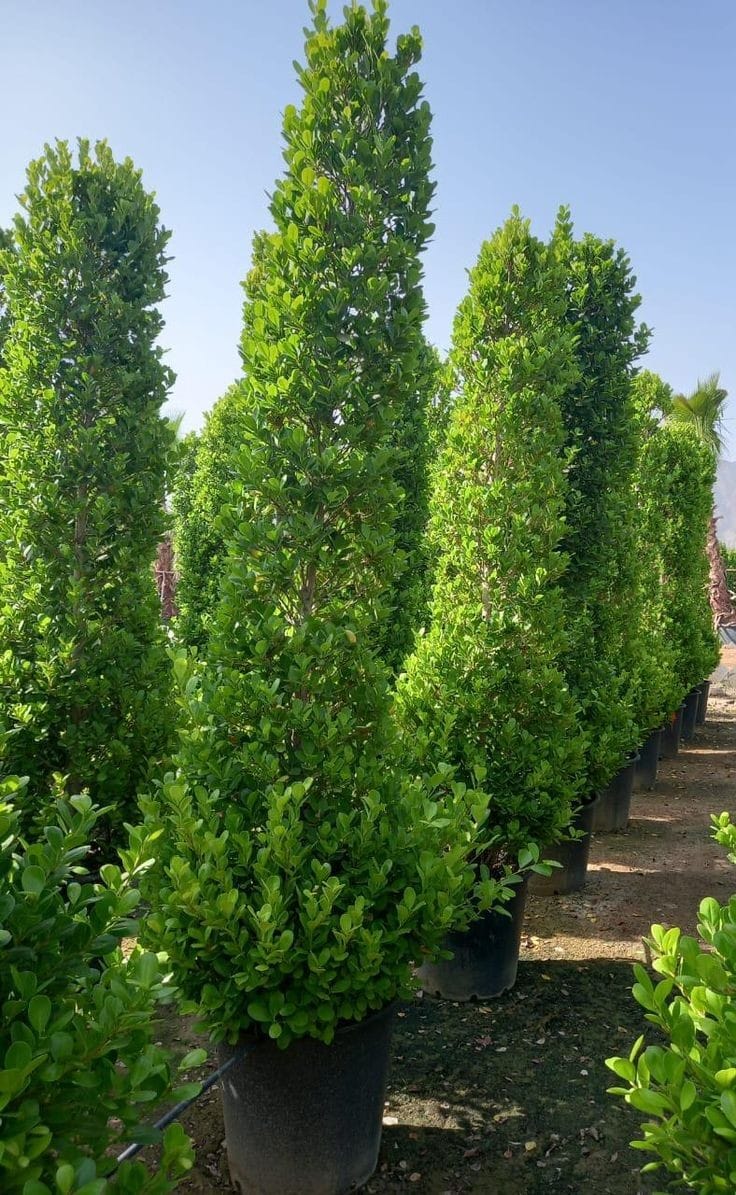Ficus Panda Plant
Ficus Panda, a specific variety, may have care requirements similar to other Ficus plants. Provide well-draining soil, moderate light, and allow the soil to dry between waterings. Pruning can be done to shape the plant and remove any yellowing leaves.

Habit
Shrub
Height
1-2 m
Growth
Moderate
Soil
Well Drained, Loamy
Shade
Indirect light to shade
Moisture
Moist
Edible
No
Medicinal
No
Origin
Southeast Asia
Climatic Condition
Tropical
Temperature (°)
20-30°C
Humidity (%)
60-80%
Potting media
Peat-based mix
Fertilizers
Balanced fertilizer
Watering
Water regularly; prefers moist soil
Plant Weight
1-3 kg
Flowering Time
Year-round
Soil Ph level
6.0 - 7.5
Water Ph level
6.0 - 7.0
Soil EC
0.4 - 0.6
Yield Per Plant
Ornamental use
NPK ratio
10:10:10
life Span
Perennial
Health Benefits
Decorative plant with lush green leaves.
Suggested Grow Media or Potting Mix ?
50% peat moss, 30% perlite, 20% compost
Suggested Fertigation/Fertilizers
Fertilize every 4 weeks with a balanced fertilizer.
Common Diseases and Remedies
Root rot, Leaf spot
Irregular brown and black spots on the leaves. Mushy and discoloured roots. Yellowing of leaf.
Over irrigation should be avoided . use well draining potting mix, for good drainage
HEALTH BENEFITS
Traditional medicine
- The Ficus Panda plant is a popular medicinal plant in India and has been used in Ayurveda for various diseases and disorders.
- In sub-Saharan Africa and other regions, Ficus plants are consumed as herbal concoctions and medicines for the treatment of hypertension and other diseases.
Cultural significance
- The Ficus Retusa has been used in many different cultural practices, including traditional Chinese and Indian medicine.
- Some cultures believe that the tree can bring good fortune and luck.
What Is A Ficus Panda Plant?
It is a bushy evergreen plant that is suitable for hedging and can be propagated through cuttings or air layering from early spring to early summer. The plant thrives in dry and sunny locations, preferring sandy or rocky soil. Ficus trees need rich, well-drained soil and bright direct sunlight.
What are the different types of Ficus Panda plant?
1. Ficus benjamina 'Panda':-
This is the classic Ficus Panda plant with its distinctive variegated white and green leaves.
2. Ficus microcarpa 'Panda':-
Another variation of the Panda plant, similar in appearance to Ficus benjamina 'Panda' but belonging to a different species, Ficus microcarpa.
3. Ficus elastica 'Burgundy':-
While not specifically labeled as a "Panda" plant, this variety of rubber plant has dark green leaves with burgundy undertones, offering a different aesthetic appeal compared to the traditional Panda plant.
4. Ficus benjamina 'Exotica':-
This variety has larger leaves than the traditional Ficus benjamina and features a bushier growth habit.
5. Ficus benjamina 'Danielle':-
Known for its compact growth and dense foliage, 'Danielle' has small, glossy leaves that are tightly clustered.

How to care for Ficus Panda plant?
1.Location:
Choosing the right location for your Ficus Panda plant is crucial for its health and growth.
2.Sunshine:
Ficus Panda plants thrive in bright, indirect sunlight
3.Soil:
Choosing the right soil for your Ficus Panda plant is essential for its overall health and well-being.
4.Hydration:
Water your Ficus Panda plant when the top inch of soil feels dry to the touch. Stick your finger into the soil to gauge moisture levels. Avoid overwatering, as it can lead to root rot, while underwatering can cause stress and leaf drop.When watering, thoroughly moisten the soil until water drains out of the bottom of the pot. Allow excess water to drain away completely to prevent waterlogging. Empty saucers or trays to avoid water accumulation.
5.Nourishment:
Nourishing your Ficus Panda plant with proper nutrients is essential for its growth and vitality. Feed your Ficus Panda plant with a balanced liquid fertilizer diluted to half strength every 2-4 weeks during the growing season (spring and summer). This provides essential nutrients such as nitrogen, phosphorus, and potassium for healthy foliage and growth. Use a balanced fertilizer formulated for indoor plants or specifically for Ficus species. Avoid fertilizers high in nitrogen, as they can promote excessive leafy growth at the expense of overall plant health. Look for a fertilizer with a balanced N-P-K (nitrogen, phosphorus, potassium) ratio. Apply the diluted fertilizer directly to the soil around the base of the plant, following the instructions on the product label. Avoid getting fertilizer on the foliage, as it can cause leaf burn.
What are the benefits of the Ficus Panda plant?
The Ficus Panda plant offers several benefits, including:
Air Purification, Aesthetic Appeal, Stress Reduction, Productivity and Focus

FAQS about growing ficus panda plant
1.How can I identify a Ficus Panda plant?
Variegated Leaves, Compact Growth Habit, Indoor Preference, Labeling
2.What are the benefits of having a Ficus Panda plant indoors?
Having a Ficus Panda plant indoors offers several benefits:
Air Purification, Aesthetic Enhancement, Stress Reduction
3.When should I repot my Ficus Panda plant?
Root Bound, Stagnant Growth, Watering Issues, Soil Degradation
4.How do I care for a Ficus Panda plant during the winter months?
Caring for your Ficus Panda plant during the winter months requires some adjustments to accommodate its changing needs . Keep your Ficus Panda plant away from drafts and cold air during the winter. Ensure that it's not placed near doors, windows, or heating vents where it can be exposed to sudden temperature fluctuations. Ficus Panda plants prefer temperatures between 60-75°F (16-24°C). Since daylight hours are shorter during the winter, your Ficus Panda plant may receive less sunlight. Ensure it still gets bright, indirect light by placing it near a north or east-facing window. If necessary, you can supplement with artificial grow lights to provide adequate light exposure.
5.Can I place my Ficus Panda plant outdoors during the summer?
When transitioning your Ficus Panda plant outdoors, do it gradually to prevent shock. Start by placing it in a shaded or partially shaded area for a few hours each day, gradually increasing the exposure to sunlight over the course of a week or two. Choose a location for your Ficus Panda plant outdoors where it will receive bright, indirect sunlight. Avoid placing it in direct sunlight, as this can lead to leaf burn, especially if the plant is not accustomed to such intense light. Ficus Panda plants prefer warm temperatures, but they can be sensitive to sudden temperature fluctuations. Ensure that the outdoor environment is consistently warm and protect the plant from cold drafts or chilly nights.



